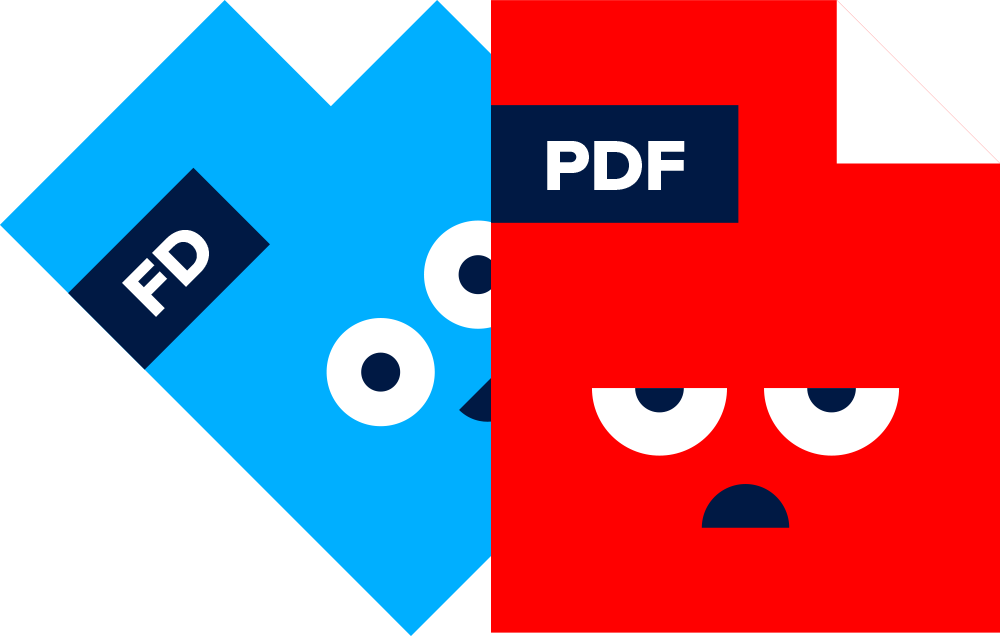If you’re looking to build good business habits, it’s usually a good idea to model yourself after some of the most successful people in the world.
Smart business people, then, took heed in 2018 when Jeff Bezos reiterated his unilateral ban on slideshow presentations in executive meetings. Instead, the richest man in the world (or second richest, depending on when you’re reading) advocates for narrative-driven memos, “with real sentences, topic sentences, verbs, and nouns”.
And, let’s be real, it’s not hard to see why. While adding a visual element to speeches is a good idea, information-laden slideshows have a habit of putting us all to sleep. There’s a reason we call it death by PowerPoint — the average meeting with a slideshow in it lasts four hours.
And research suggests it takes only six minutes for us to switch off during such a presentation. Over 58% of respondents to a questionnaire by York-based presentation specialists Future Presents admitted to falling asleep during a business slideshow presentation. And that’s just the ones that owned up to it.
Slideshow presentations are irritating to create, mostly boring to watch and — worst of all — they don’t work. So why do we keep using them for presentations?
And more importantly, why do we increasingly see companies sharing slideshows, originally designed to supplement a talk, as marketing collateral to download and peruse without context?
Unfortunately, most of our choices at work are driven more by convention than by research or reason.
Let’s unpick the failure of the slideshow format and discuss what the future of presentations might look like.
Slideshows perform worse than simply talking about your topic
Jeff Bezos’ preference for narrative-driven briefing sessions is borne out by the research. A 2017 Harvard study found that audiences rated Powerpoint presentations comparably to a presenter with no visual stimuli. It also found no evidence to suggest that slideshows helped audiences understand or retain the information any better than an unaccompanied speaker.
What’s interesting to note is that audiences looked much more favourably on non-linear, narrative presentation formats — in this case, Prezi — than both traditional presentations and speaker-only presentations. This gives us some insight into the kinds of formats that prove much more effective than standard slideshows.
Cognitive psychology tells us bullet points don’t work
The problem with slideshows does not lie in using visuals to supplement your story. On the contrary, visuals are known to help your audience both understand and retain information.
As it turns out, the problem largely lies in the bullet point.
The bullet point is a mainstay of slideshow presentations around the world. Much to audiences’ irritation, they’re commonly misused, overused, and abused in slideshows. For the writer, they seem like a sensible way to break down lists of information. But for the reader, they make information more difficult to process and to remember.
Recent research from the University of Central Lancashire shows that cognitive load constraints mean that bullet points often overwhelm audiences with too much information at once. Moreover, it suggests that the brain is much better at grouping things in proximity than it is by shape.
That means that placing objects together, even when they’re supposed to be made distinct by little dots, means that we will mostly remember them as one item.
So, when General Mattis of the U.S. Marine Corps famously said, “Powerpoint makes us stupid,” he was right on the money.
Rich media and interactivity are key to information processing
Anyone that’s played a computer game can tell you just how much difference interactivity makes in the way we consume content. And the research confirms just how much more engaging interactive content is than static content.
This study out of Penn State University does a great job of exploring how higher levels of interactivity enhance our ability to recall information. It turns out we process information faster and retain it better when we consume it through an interactive medium.
Even when interactivity isn’t a realistic expectation of your content, rich media incorporating video and audio can offer much higher levels of both engagement and retention. That’s because the brain can share the cognitive load of processing information across multiple cortexes.
Bullet stuffed slideshows, conversely, force your audience to process ideas through just the language part of their brains, leading to rapid cognitive overload. That’s why we call it death by PowerPoint — our brains fill up quickly with information and then shut down.
Slideshows don’t bring you data
Today, you see many companies using slideshows as marketing or sales collateral, either converted to a PDF and downloaded, or perhaps online as a slideshare.
But a much-overlooked criticism of slideshows is that they are a one-way medium. In the age of big data, when real user feedback should be at the heart of business decision-making, this is a significant cap on the advantages of traditional presentations.
That’s not to say it’s impossible to get quality feedback from a slideshow; just that it’s much more difficult and that feedback is often never as decisive as digital indicators.
With the importance of actionable data in mind, it’s easy to see why interactive digital tools have such an advantage. Users in control of their own content experiences bring you better insight into what resonates and persuades.
Even tools as simple as click maps and scroll depth can give you more insight than a unidirectional conversation with your audience. At Foleon, we’re strong advocates of the power of data to transform business results.
So what does the future of presentations look like?
The need for us to communicate complex information isn’t going away any time soon. But as business turns away from traditional solutions like Powerpoint and Google Slides, the failures of these mediums help us determine the qualities to look for in next-generation communications tools. They need to be:
Narrative-driven - allow us to tell stories that make complex information more memorable
Interactive - give us opportunities to play an active role in consuming information
Rich media - offer the chance to process information on multiple cognitive levels
Trackable - help us learn from audience experiences using quantitative methods
But that’s not all. The content we use has to fit the writer’s needs, too. It should hit business goals whilst remaining scalable, efficient, and flexible.
What do sales agents have to say about content?
To help us reimagine what the future of presentations might look like, we thought we’d ask the people that use them the most — sales teams. The feedback we got was pretty enlightening, giving us insight into the needs of executives on the front-lines of key communications challenges.
They helped us understand how presentations play out in real sales situations:
“You’re not creating the content experience or immersive journey that you think you are. And you’re wasting a lot of time making a proposal when prospects will only use one page in their evaluation.”
And underscored the importance of the content experience in the sales pipeline:
“As a sales rep myself, I would be interested in understanding how to make my proposals more engaging because sometimes it’s the proposal that makes all the difference.”
Most importantly, they clued us into a common bottleneck that keeps salespeople from adapting to specific prospect needs:
“Sales reps are not generally empowered to create bespoke content, whether it's boring PPT or Doc and certainly not digital content.”
Building the next generation of communications tools
It’s clear that the slideshow presentation has had its day. So how do you build content experiences that engage audiences in narrative-driven, interactive conversations with user decision-making at the centre?
Everything we’ve learned so far suggests that content is most effective when the audience is in the driver’s seat — your reader knows what they need to know and when. It’s the publisher’s job to make sure the right information is easy to find and fun to consume.
At Foleon, we often say that while we create the content, ultimately, the customer owns their journey. Creating content that users can interact with and navigate represents the next stage in the evolution of content.



